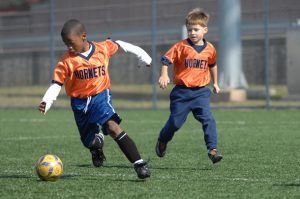I got a question that’s been more common of late as more trainers, coaches, and therapist go online. Grab a @neurocoffee and dig in to the week. From Allen: What advice can you give me on what online assessments I should be using? Simple advice. It’s not so much about what assessments I think you […]
Professional Development
Q & A for The 16% – Elbow Valgus Explained and Treatment/Training Strategies
I finally got a good elbow question that will shed some light on why it’s not so different from any other joint. Hope you have your @neurocoffee in hand. From John: I have heard you mention how examining relative motion at the elbow is very similar to the knee. I have had great success utilizing the […]
Q & A for the 16% – Single Leg Stance Hip Mechanics
Here’s a great question to lead into the weekend on some pelvic-hip mechanics and recognizing how one manages the propulsive phase of gait. Hope you’ve got your @neurocoffee in hand. From Mikhael: If someone is standing on one leg (left) and another leg is flexed in hip and knee 90 degrees then the standing leg’s […]
Q & A for The 16% – A Runner with IT Band Syndrome… Really?
I think the representation of the IT Band is still misunderstood even though we have some good dissection information that should have clarified things 14 years ago. Hope you have your @neurocoffee handy. From Tony: I have a runner diagnosed with a right IT Band friction syndrome where he gets pain with running at the […]
Thoughts on Long-Term Athletic Development – A Repost from 2014
Thoughts on long-term athletic development… 1. In a sporting environment, athletes perform based on learned prediction models associated with experience. 2. Research supports the understanding that motor [movement] variability facilitates motor learning and prediction capabilities that determine the ultimate level of performance. 3. Greater movement variability [movement experience] is associated with a faster rate of […]




